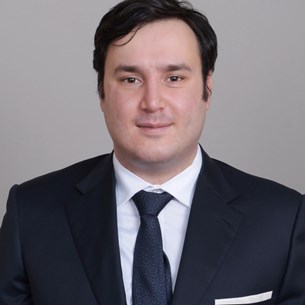Meeting
2022 ASCO Genitourinary Cancers Symposium

Yale University, New Haven, CT
Serhan Unlu , Junghee Jenny Shin , Jennefer Par-Young , Joseph Vinetz , Daniel P. Petrylak , Insoo Kang , Joseph W. Kim
Background: TMPRSS2 is one of the two key enzymes that SARS-CoV-2 requires for its entry to the cell. TMPRSS2 is regulated by androgen receptor. It is well described Androgen Receptor Directed Therapy (ARDT) downregulates the expression of TMPRSS2. We hypothesized that the ARDT has a protective role in patients with prostate cancer (PCa) from poor outcome of COVID-19. Methods: A retrospective chart review of PCa patients with COVID-19 between March to October 2020 in the Yale-New Haven Health System was performed. Demographics, comorbidities, home medications, laboratory data, treatment, and clinical outcomes of COVID-19 were collected. ARDT was defined as the use of GnRH agonist, GnRH antagonist, or androgen receptor antagonist. This study was reviewed and approved by the Institutional Review Boards of Yale University. Results: A total of 146 (1.1%) prostate cancer cases were identified from the 13,642 cases of COVID-19. The clinical characteristics are summarized in the table. Twenty-five (17%) were on active ARDT and 121 (83%) not on ARDT (non-ARDT). The rates of hospitalization were the same: 52%, between the ARDT and non-ARDT group. Of those admitted, mean duration of hospitalization were 9.2 days (Range 1-25) and 14.9 days (Range: 2-47) in ARDT and non-ARDT groups, respectively (p=0.14). Rates of hospital stay >30 days were 0% versus 14.3% (9/63) in ARDT and non-ARDT groups, respectively (p=0.15). Intubation rates were 0% versus 11% (7/63) for ARDT and non-ARDT groups, respectively (p=0.21). Mortality rates were 8% and 13.2%, in ARDT and non-ARDT groups, respectively (p=0.47). Conclusions: The prevalence of PCa was infrequent. Despite advanced stage of the cancer in ARDT group, there was a trend toward decreased severity of COVID-19 and mortality rates compared to non-ARDT group. Our data support further investigation on a protective role of hormone therapy in PCa patients with COVID-19.
| Non-ARDT(n) | ARDT(n) | P-Value | |
|---|---|---|---|
| Total | 121 | 25 | |
| Mean Age | 77.2 | 78.4 | 0.65 |
| Metastasis(n) | 5% (6) | 48% (12) | <0.0001 |
| Hospitalized (n) | 52% (63) | 52% (13) | >0.99 |
| Mean Hospital Stay Length in days (Range) | 14.9 (2-47) | 9.2 (1-25) | 0.14 |
| Hospital Stay≥30 days(n/Hospitalized) | 14.29% (9/63) | 0% (0/13) | 0.15 |
| Intubation (n/Hospitalized) | 11.1% (7/63) | 0% (0/13) | 0.21 |
| Mortality (n) | 13.2% (16) | 8% (2) | 0.47 |
Disclaimer
This material on this page is ©2024 American Society of Clinical Oncology, all rights reserved. Licensing available upon request. For more information, please contact licensing@asco.org
2022 ASCO Genitourinary Cancers Symposium
Poster Session
Poster Session A: Prostate Cancer
Prostate Cancer - Advanced,Prostate Cancer - Localized
Translational Research, Tumor Biology, Biomarkers, and Pathology
J Clin Oncol 40, 2022 (suppl 6; abstr 161)
10.1200/JCO.2022.40.6_suppl.161
161
J4
Abstract Disclosures
2023 ASCO Annual Meeting
First Author: Renuka Verma
2023 ASCO Annual Meeting
First Author: Melanie Claps
2023 ASCO Annual Meeting
First Author: Prarthna V. Bhardwaj
2024 ASCO Annual Meeting
First Author: Zhiting Tang